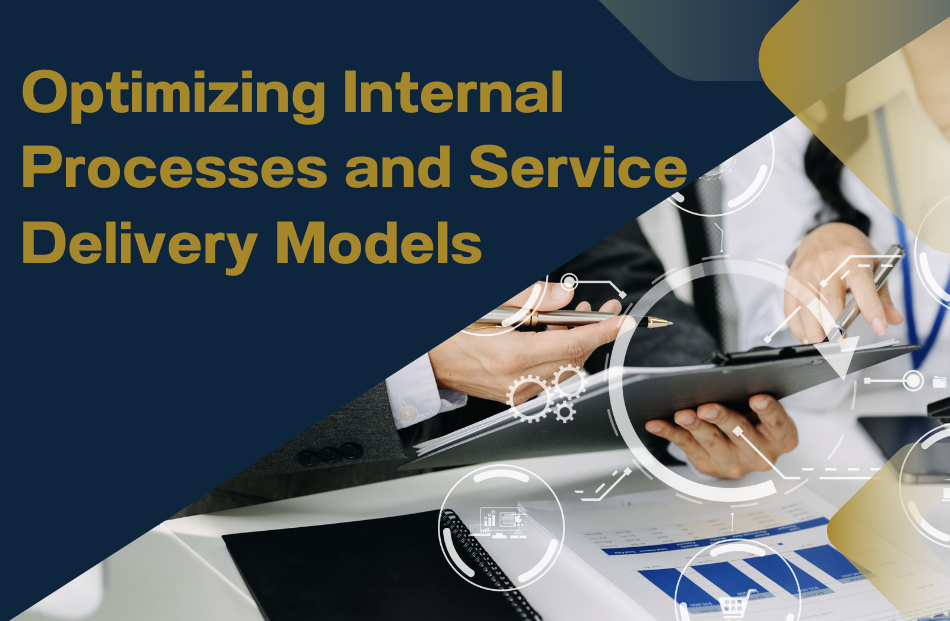Key Takeaways
- Optimizing internal processes is crucial for reducing costs, increasing productivity, and improving service quality.
- Developing scalable service delivery models is essential for ensuring consistent service quality and accommodating business growth.
- Streamlining workflows, standardizing services, and leveraging technology are key strategies for optimizing internal processes and developing scalable service delivery models.
As an MSP, it’s essential to have internal processes that are optimized and scalable service delivery models. These two elements are the backbone of any successful MSP, and without them, your business will struggle to grow and meet the demands of your clients. In this article, I will provide a guide to optimizing your internal processes and developing scalable service delivery models.
Optimizing your internal processes is crucial to ensure that your business runs smoothly and efficiently. It involves streamlining your workflows, eliminating redundancies, and automating repetitive tasks. By doing so, you can reduce costs, increase productivity, and improve the quality of your services. In this article, I will provide tips and strategies for optimizing your internal processes, including how to identify bottlenecks and how to streamline workflows.
Developing scalable service delivery models is another critical factor in the success of your MSP. It involves creating processes that can be easily replicated and scaled as your business grows. By doing so, you can ensure that your services remain consistent, even as you take on more clients. In this article, I will provide tips and strategies for developing scalable service delivery models, including how to standardize your services, how to create repeatable processes, and how to leverage technology to automate tasks.
Tips for Optimizing Internal Processes
As an MSP advisor, optimizing internal processes is essential for developing scalable service delivery models. Here are some tips to help you optimize your internal processes.
Assessing Current Processes
The first step in optimizing internal processes is assessing your current processes. This involves identifying what is working well and what needs improvement. To do this, start with the end in mind by identifying the desired outcome and working backwards from there. Additionally, understanding the customer’s needs and available resources will help you design processes that are efficient and cost-effective.
Implementing Process Improvements
Once you have assessed your current processes, it’s time to implement process improvements. This involves making changes to your existing processes to improve efficiency and effectiveness. To do this, identify areas that need improvement and design new processes that are more streamlined and effective. It’s important to test and refine these processes as needed to ensure they meet the customer’s needs.
Leveraging Automation
One way to optimize internal processes is by leveraging automation. Automation can help to streamline processes, reduce errors, and increase efficiency. To do this, identify processes that can be automated and implement tools and software that can help automate these processes. This will help to free up resources and allow your team to focus on more value-added tasks.
Continuous Process Evaluation
It’s important to continuously evaluate your internal processes to ensure they remain effective and efficient. This involves regularly reviewing your processes and making changes as needed. Additionally, seeking feedback from customers and team members can help you identify areas that need improvement so that you can make changes accordingly.
Developing Scalable Service Delivery Models
As an MSP advisor, one of the key advice I always give is for businesses to develop a scalable service delivery model that can meet the needs of the customers in the most efficient and cost-effective way possible. In this section, I will discuss some of the key considerations when developing a scalable service delivery model.
Defining Service Delivery Objectives
The first step in developing a scalable service delivery model is to define your service delivery objectives. This involves understanding the customer’s needs and identifying the best way to meet those needs. It is important to consider factors such as response time, resolution time, and customer satisfaction when defining service delivery objectives.
Building a Modular Service Framework
To ensure scalability, it is important to build a modular service framework. This involves breaking down the service delivery model into smaller, more manageable components that can be easily scaled up or down as needed. A modular service framework also makes it easier to identify areas for improvement and optimize the service delivery process.
Service Level Agreements (SLAs) and Metrics
Service level agreements (SLAs) and metrics are important tools for ensuring that the service delivery model is meeting the defined objectives. SLAs define the level of service that the customer can expect, while metrics provide a way to measure and track the performance of the service delivery model. It is important to regularly review SLAs and metrics to ensure that they are aligned with the customer’s needs and that the service delivery model is meeting the defined objectives.
Growth Management Strategies
Having growth management strategies in place is essential to ensure that the service delivery model can scale up as the customer’s needs grow. This involves identifying potential bottlenecks and developing strategies to address them, as well as identifying opportunities for automation and process optimization to improve efficiency and reduce costs.
Conclusion
In conclusion, developing scalable service delivery models and optimizing internal processes are critical to the success of any MSP. Being an MSP advisor, I know that process mapping and delivery methods is an essential part of any successful business strategy. This is why I provide MSP consultancy and advisory services that enable businesses looking to develop effective service delivery models that are efficient and cost-effective.
As highlighted above, it is essential to ensure that your processes are easy to understand and designed for the end user. To achieve this, I will work with your team to help visualize your process and identify areas that need improvement to ensure you are delivering high-quality services consistently. Get in touch with me today.



